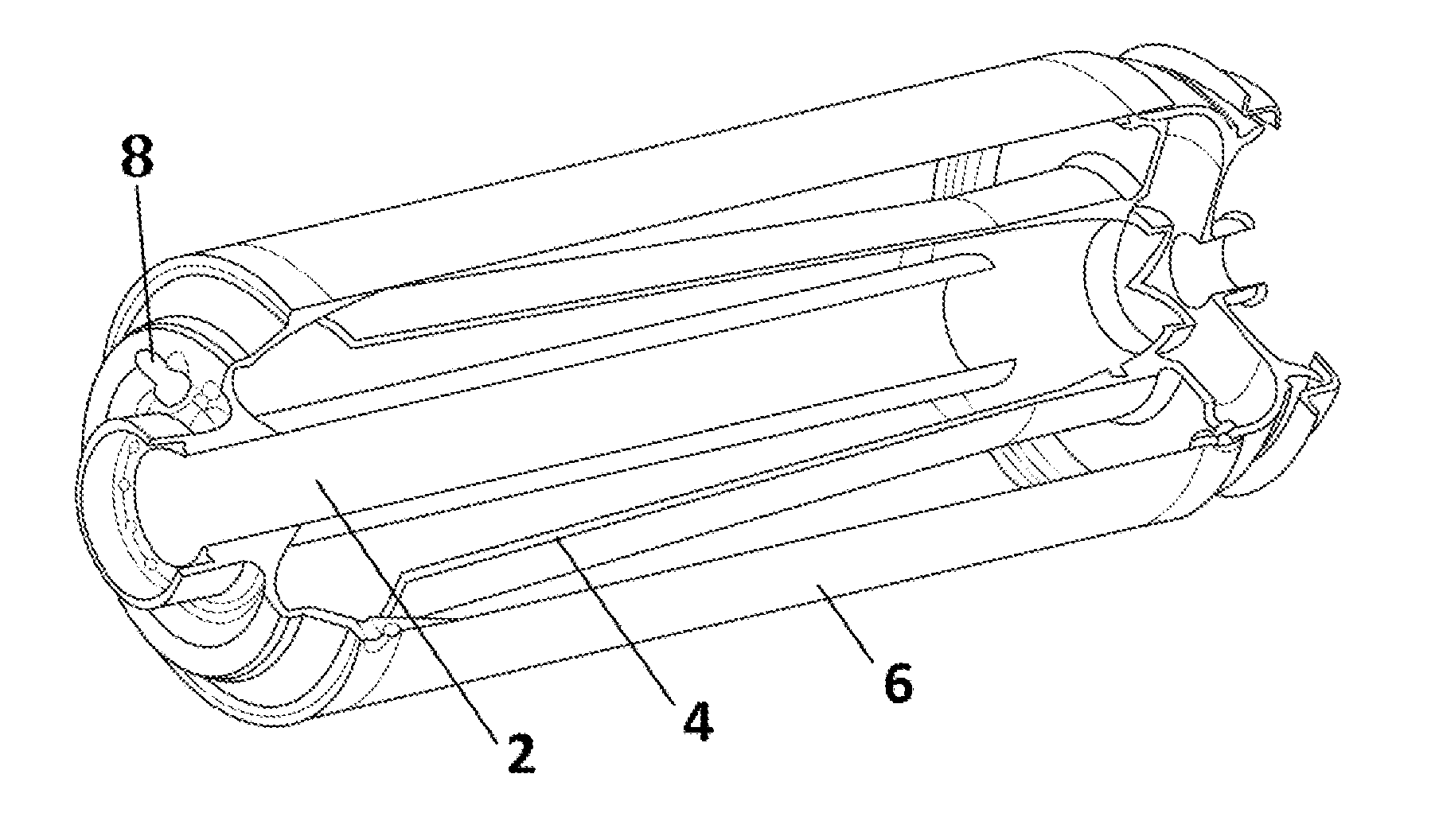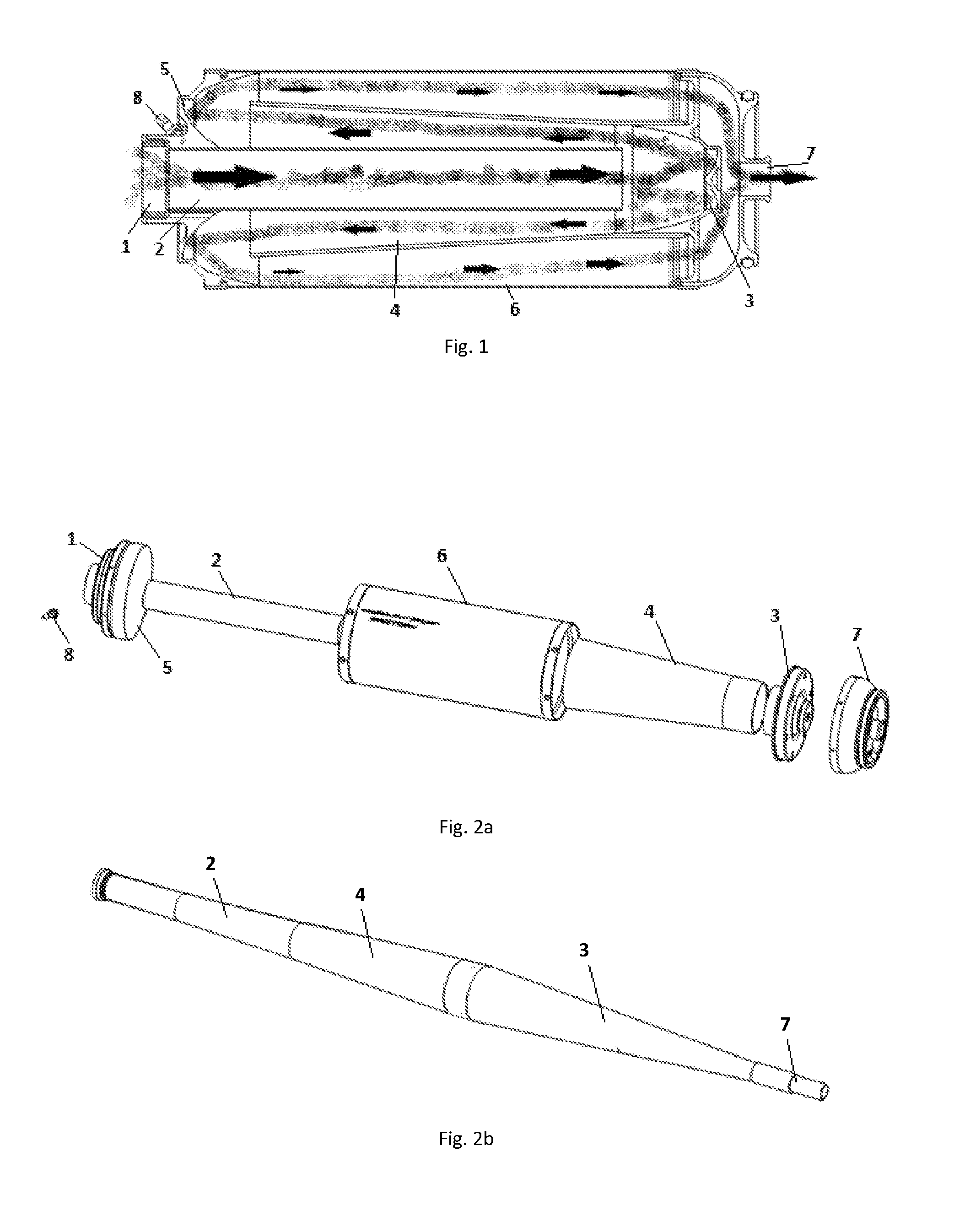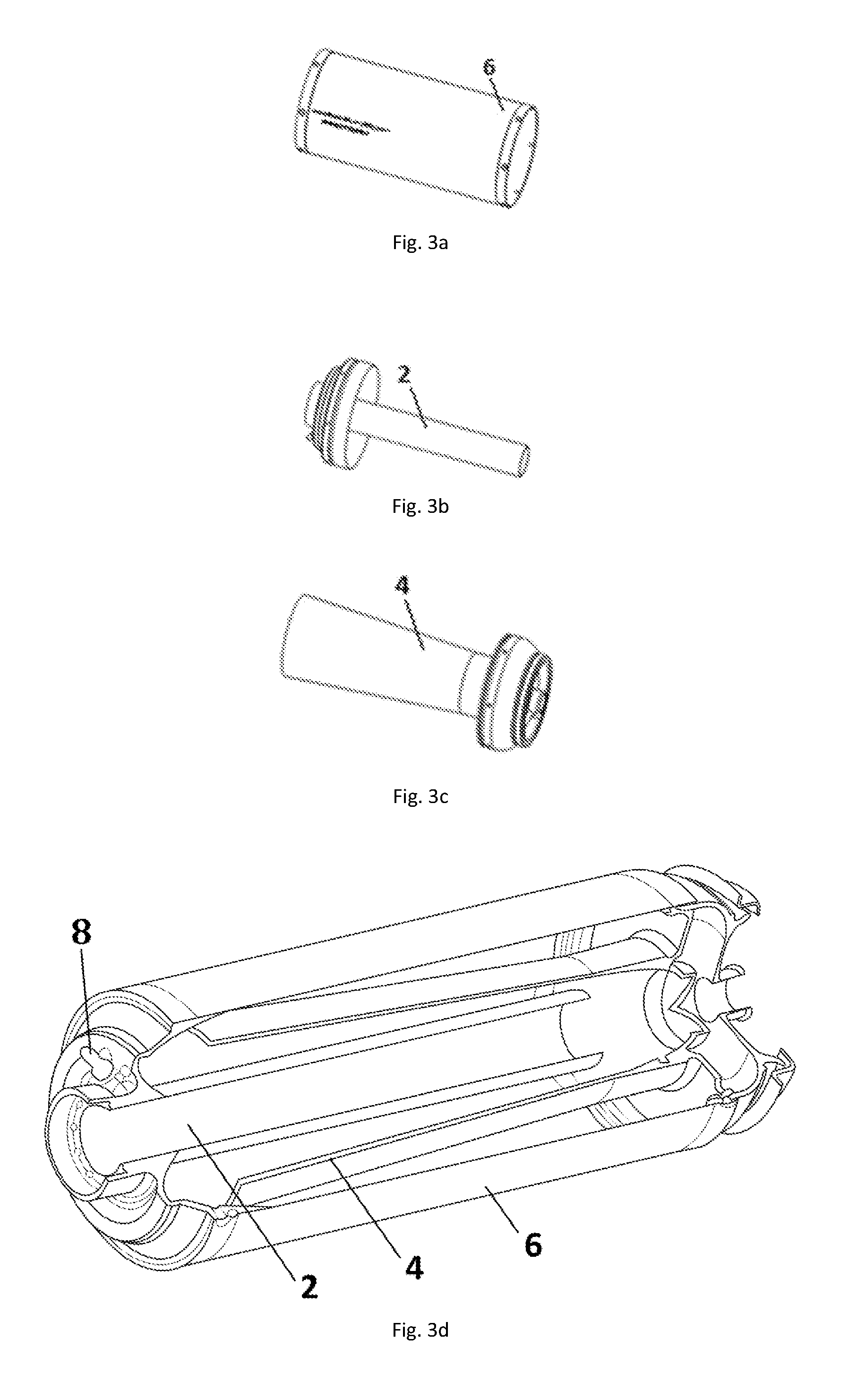Exhaust resonator for a two-stroke engine for use in a motorized float
a two-stroke engine and exhaust resonator technology, which is applied in the direction of mechanical equipment, instruments, sound producing devices, etc., can solve the problems of high total weight of the float, the design of the bent exhaust resonator requires greater strength, and the difficulty of placing this type of resonator, so as to reduce the pressure flow, the effect of reducing the energy loss and increasing the volum
- Summary
- Abstract
- Description
- Claims
- Application Information
AI Technical Summary
Benefits of technology
Problems solved by technology
Method used
Image
Examples
Embodiment Construction
[0032]FIG. 1 illustrates a cross section of the exhaust system according to this embodiment. The inlet 1 is provided on the first cover of the exhaust resonator and the first end of the stabilizer tube 2 connects to the inlet. The stabilizer tube 2 has an elongated cylinder shaped case, and its other end is aimed at the primary reflection surface 3 arranged near the cover of the exhaust resonator. The first end of the flared expansion cone 4 surrounding the stabilizer tube 2 thus defining the first expansion space connects to the outer edges of the primary reflection surface 3 in the direction back to the first cover. The second end of the expansion cone 4 aims back at the outer edge of the first cover inwardly provided with the secondary reflection surface 5, to which the first end of the outer cylinder case 6 of the exhaust resonator surrounding the expansion cone 4 connects. The other end of the exhaust resonator case connects to the second cover of the exhaust resonator fitted w...
PUM
 Login to View More
Login to View More Abstract
Description
Claims
Application Information
 Login to View More
Login to View More - R&D
- Intellectual Property
- Life Sciences
- Materials
- Tech Scout
- Unparalleled Data Quality
- Higher Quality Content
- 60% Fewer Hallucinations
Browse by: Latest US Patents, China's latest patents, Technical Efficacy Thesaurus, Application Domain, Technology Topic, Popular Technical Reports.
© 2025 PatSnap. All rights reserved.Legal|Privacy policy|Modern Slavery Act Transparency Statement|Sitemap|About US| Contact US: help@patsnap.com



